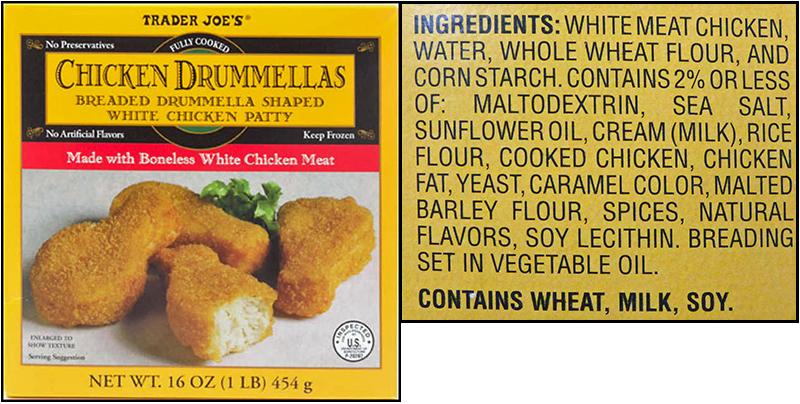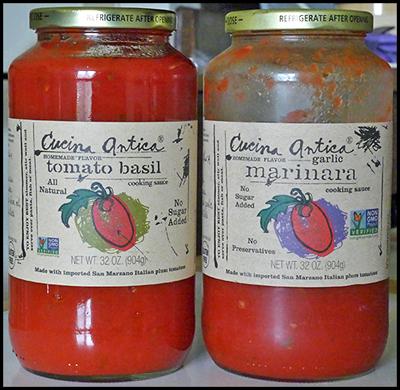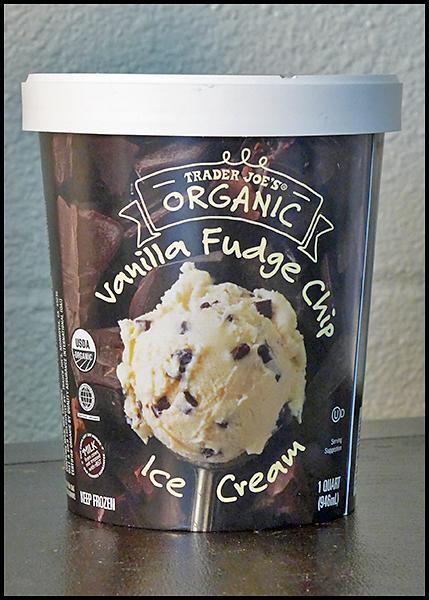-
Posts
4,803 -
Joined
Content Type
Profiles
Forums
Store
Help Articles
Everything posted by Shel_B
-
Thanks so much ...
-
I would like to make this scone recipe as shown in the video. And here is the printed version. Quite a few recipes I've baked call for specific temperature of the milk (warm, room temp, cold, etc.) This recipe, while calling for chilled butter, says nothing about the recommended temp of the milk. What temp should the milk be in this recipe for best results? ETA: Since the butter should be chilled, perhaps the milk should be cold as well, yes?
-
Did you fully cook the pasta then add the sauce and bake it, or did you use some other technique? I can't tell if there's cheese baked into it, but it seems like adding cheese before baking might add some nice flavor and texture. Maybe a moment or two under the broiler before serving to get some crust on the cheese.
-
I found the details on your blog ... I'll look at it more closely later on.
-
Why don't you just open the bag and taste one or two? The you can tell us what to expect ...
-
We find that, for us, it does. I shop at Costco about once a month, not just for savings, but for savings on some items I can't get anywhere else. We saved a good amount on a set of tires for our Prius, I got a great deal on kitchen towels, and there are food and drug items that we come out very well on, including some items that are impossible to find at our local markets.. We have two cards on our membership for the same $55.00 membership fee. My GF and I don't live together, so we sometimes shop separately, in essence we have two accounts @ $27.50 each. Hard to lose at that price.
-
While most of what is presented I already know, there are some things that are new, useful, or interesting. Click Here
-
I've purchased them a few times and have seen them a few times, but not recently, although I've not been looking for M&Ms in quite a while.
-
The Local Butcher Shop here in Berkeley has been selling "single origin" meat for years. A friend has a small cattle operation and I've been getting such meat from him for a couple of years. All grass fed ...
-
The issue as I see it is very simple: a pound of a vegetable like spring onions or leeks, while a precise measurement, does not take into account such things as the size and shape of the item. A pound of thick onions will yield fewer spears than thin ones. Therefore, more of the cream mixture will be needed to cover the spears to a certain depth, and the depth of the cream is important to the recipe, more so than the specific weight or volume of the cream.. And , since the depth of the cream is important, the size of the dish can be a big factor in how much cream will be needed and how many spears can fit into the dish. So, IMO, there are many variables that will affect the amounts of the ingredients that are required. So, precise measurements of weight and/or volume may still need to be adjusted when all other factors are considered.
-
I don't think that this type of cooking of necessity has to be particularly precise. I am reminded of Judy Rodgers admonishment to taste and test as you go along. In fact, Vivian Howard also suggests that same idea when she mentions the amount of infused cream to include in the spring onion recipe. She says "The scallions should be wading in the cream, their chests barely peeking out, rather than bobbing around in an ocean of it. Adjust by scooping out some liquid or adding a little straight cream from the carton if necessary."
-
Trader Joe's Chicken Drumellas: These puppies are great! It took me a couple of tries to get the time/temp right for my oven, and once I did, I was able to get the 100% chicken interior to a hot and juicy state while the breaded exterior was nicely crunchy and brown. I keep a package in the freezer and enjoy them once a month or so. Biggest problem for me is to curb my enthusiasm and not eat the entire package in a day ... highly recommended! The neighbor's kids love 'em, too! And they are so much better than the fast food McNuggets like at McDonald's, BK, and others. http://traderjoesreviewer.blogspot.com/2012/05/and-now-for-some-chicken.html
-
This is very useful information. I may just give it a try as my Microplane is several years old and it might be nice to give it a little touch-up.
-
Have you noticed that the recipe in the video is different than the written recipe? That should give one thought as to just what ingredients to use. Also, now's not the time for spring onions, so when making the recipe I will need a substitute - maybe leeks from our garden which are very flavorful?
-
This recipe really piqued my interest when I saw it on the show. I plan to make the Spring Onion Gratin sometime soon.
-
FWIW, I sometimes use the described method for making brown rice (I use Masa Organic and Koda brands mostly) and, before cooking, I thoroughly rinse the rice in lots of running water. I put the rice in a strainer, run water over it while using my hand to stir and mix the grains. This pretty much eliminates any grey scum, although there are times when some scum forms, and then I just skim it. Usually the rice needs very little skimming.
-
Viewers are taken behind the scenes of a cooking show starring the animated chef. His dealings with his producer and stage manager provide the yuks. http://www.imdb.com/title/tt0285359/?ref_=nm_flmg_act_93
-
Yesterday I stopped at Whole Foods and picked up a couple of jars of Cucina Antica sauce. We had the garlic marinara with spaghetti and meatballs last night. When I first tasted the sauce, directly from the jar and right after opening, I found the taste and astringency of the garlic to be overwhelming. However, after cooking the pre-cooked and frozen meatballs in the sauce, and adding some grated parmesan and a glug of olive oil, the resulting sauce was quite good. I also liked the sauce because it wasn't completely smooth, but, rather, had a bit of texture to it. The ingredients seemed fresh, and what was a very pleasant surprise, there was very little water or watery juice to be found. My sweetie said that the meal reminder her of eating in a restaurant. I guess that's a pretty good compliment ... It's a little spendy, but probably worth it compared to the more common commercial sauces. I'd buy it again, and would look for a sale. I got these jars for, I believe, a $1.50 off the regular price. Ingredients: Imported Italian San Marzano tomatoes, tomatoes, extra virgin olive oil, fresh garlic, salt, basil, white pepper, black pepper.
-
That opens the door to a lot of options. I have a source for some excellent French cider and apple juice - from Normandy, I believe. Could they be an option in some situations.
-
Thanks to all for your help. The local BevMo has Boulard Calvados 50ml size for $6.99. Seems like a good and inexpensive way to start learning about Calvados. I'll head over there later today or tomorrow. Maybe they have other small bottles so I can sample a few choices.
-
There are several recipes I want to experiment with that contain Calvados as an ingredient. I know very little about Calvados. Can someone recommend a good brand that works well in desserts such as this French Apple Cake? I don't want to spend a lot of money, but do want a good quality product. Hmm ... is Calvados a brand? If so, are there other brands or liquors that would be a good substitute?
-
Trader Joe's has a couple of chicken pot pies. There's this one and then there's this one. I've not had the first, but have enjoyed the second one a couple of times. I plan to give the first one a try soon. Pictures show that they both have peas ...
-
TJ's Organic Vanilla Fudge Chip Ice Cream I really like this ice cream! It has a nice, rich, well-rounded vanilla flavor with some slight floral notes. It's not a heavy, premium ice cream, like Haagen Daz, but, rather, an excellent commercial ice cream, in the same general category as Dryers, Baskin Robins, or Breyers, but, IMO, a definite notch or two up. The ice cream has a nice, satisfying mouth feel. The fudge chips are plentiful, not so much that they overwhelm or compete with the flavor and texture of the ice cream, yet enough to offer an enjoyable texture that compliments the ice cream in every bite. Their size is just perfect for my taste and preference. This is definitely worth a try, and I know that I'll be buying it again. Definitely worth a try - a quart-sized carton for $5.99 - it's definitely a good value. Ingredients: Organic Milk, Organic Cream, Organic Sugar, Organic Skim Milk, Organic Fudge Chips (Organic Cane Sugar, Organic Coconut Oil, Organic Cocoa, Organic Soybean Oil, Organic Cocoa Liquor, Organic Soy Lecithin), Organic Carob Bean Gum, Organic Guar Gum, Organic Vanilla Extract. CONTAINS MILK, SOY, COCONUT. I posted this review earlier in the day and it "disappeared." I hope this one stays active ...
-
I checked out Cucina Antica sauces and liked what I saw. The next time I'm at one of the nearby markets that carry the product, I'll make it a point to purchase a couple of jars. I like the ingredient lists on the sauces ... simple, no added sugar, etc.






